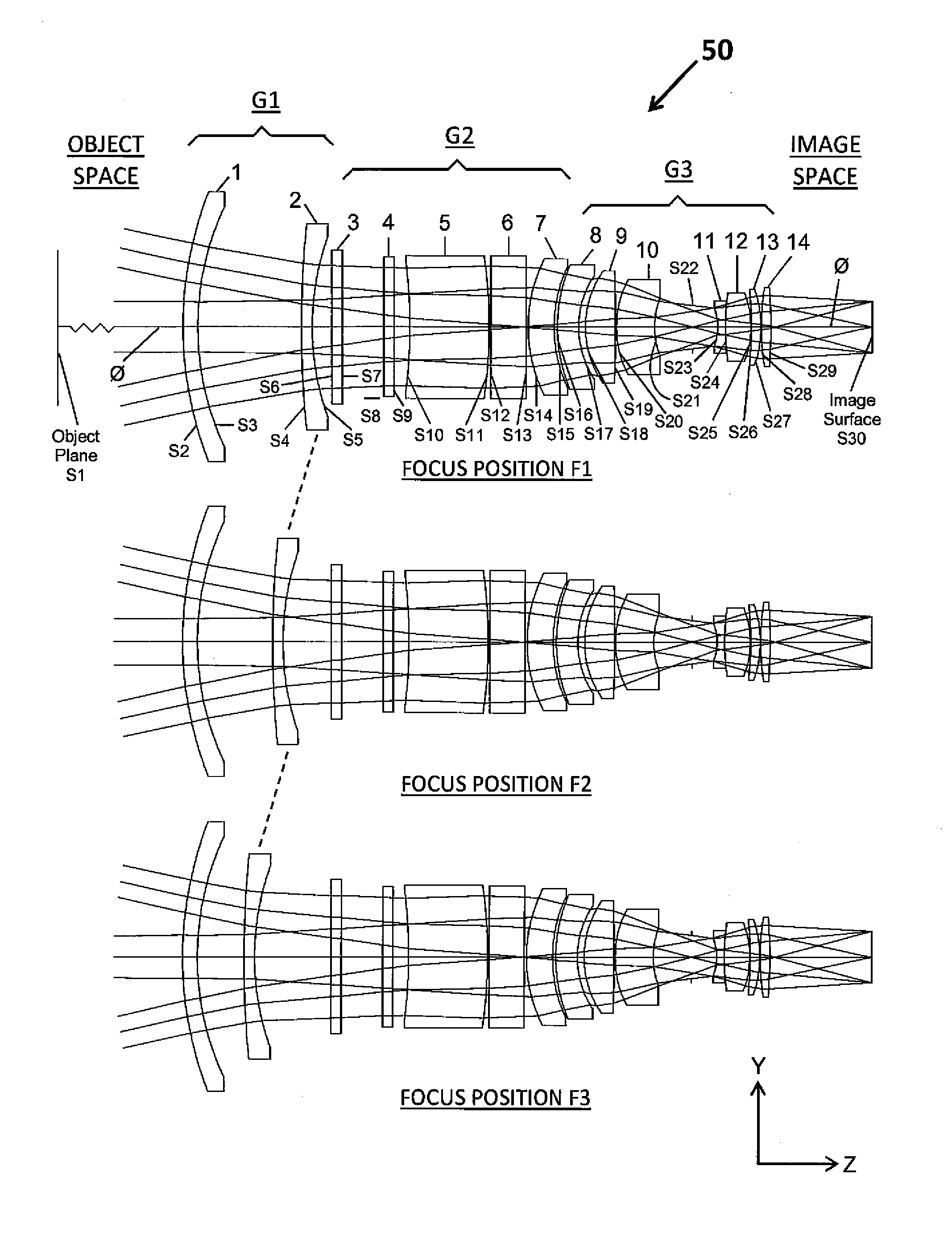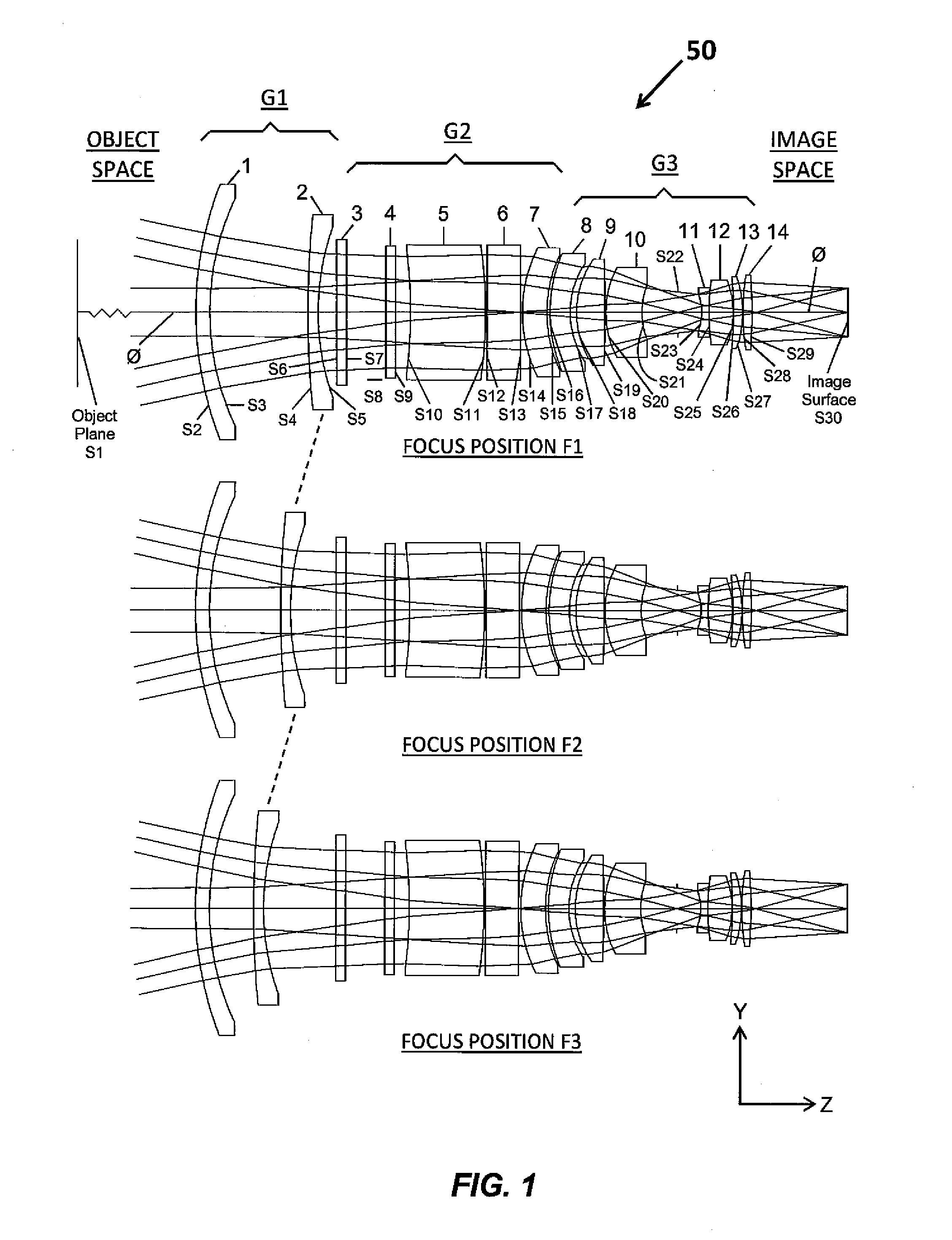Anamorphic objective lens
- Summary
- Abstract
- Description
- Claims
- Application Information
AI Technical Summary
Benefits of technology
Problems solved by technology
Method used
Image
Examples
Embodiment Construction
[0041]The invention relates to anamorphic objective lenses, and in particular to a range of different focal length anamorphic objective lenses covering at least a focal length range from 25 mm to 135 mm and providing low residual chromatic aberration, a traditional oval bokeh shape and different depths of field in the vertical and horizontal azimuth directions of the field.
[0042]The term “lens group” as used in connection with the anamorphic objective lens disclosed herein means one or more individual lens elements. Also, the terms “optical stop” and “stop” are equivalent terms that can be used interchangeably. A “field stop” as the term is used herein is a stop where the chief rays do not go through the center of the stop at the optical axis and the general purpose of a field stop is to vignette the edges of the radiation beams.
[0043]In the example provided herein, the front lens group is negatively powered and the rear lens group is positively powered and they have been paired wit...
PUM
 Login to View More
Login to View More Abstract
Description
Claims
Application Information
 Login to View More
Login to View More - R&D
- Intellectual Property
- Life Sciences
- Materials
- Tech Scout
- Unparalleled Data Quality
- Higher Quality Content
- 60% Fewer Hallucinations
Browse by: Latest US Patents, China's latest patents, Technical Efficacy Thesaurus, Application Domain, Technology Topic, Popular Technical Reports.
© 2025 PatSnap. All rights reserved.Legal|Privacy policy|Modern Slavery Act Transparency Statement|Sitemap|About US| Contact US: help@patsnap.com



